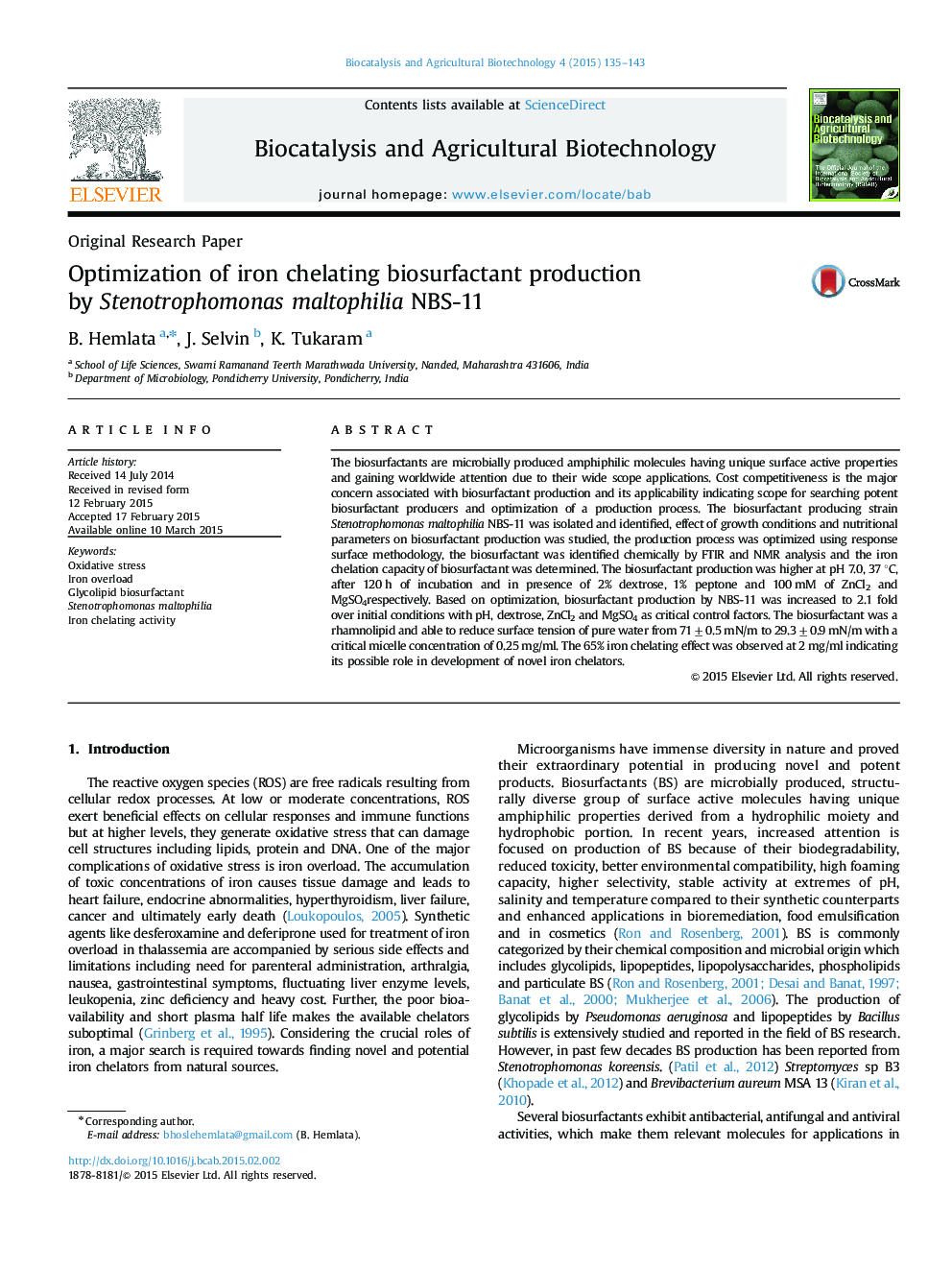| Article ID | Journal | Published Year | Pages | File Type |
|---|---|---|---|---|
| 2075430 | Biocatalysis and Agricultural Biotechnology | 2015 | 9 Pages |
The biosurfactants are microbially produced amphiphilic molecules having unique surface active properties and gaining worldwide attention due to their wide scope applications. Cost competitiveness is the major concern associated with biosurfactant production and its applicability indicating scope for searching potent biosurfactant producers and optimization of a production process. The biosurfactant producing strain Stenotrophomonas maltophilia NBS-11 was isolated and identified, effect of growth conditions and nutritional parameters on biosurfactant production was studied, the production process was optimized using response surface methodology, the biosurfactant was identified chemically by FTIR and NMR analysis and the iron chelation capacity of biosurfactant was determined. The biosurfactant production was higher at pH 7.0, 37 °C, after 120 h of incubation and in presence of 2% dextrose, 1% peptone and 100 mM of ZnCl2 and MgSO4respectively. Based on optimization, biosurfactant production by NBS-11 was increased to 2.1 fold over initial conditions with pH, dextrose, ZnCl2 and MgSO4 as critical control factors. The biosurfactant was a rhamnolipid and able to reduce surface tension of pure water from 71±0.5 mN/m to 29.3±0.9 mN/m with a critical micelle concentration of 0.25 mg/ml. The 65% iron chelating effect was observed at 2 mg/ml indicating its possible role in development of novel iron chelators.
